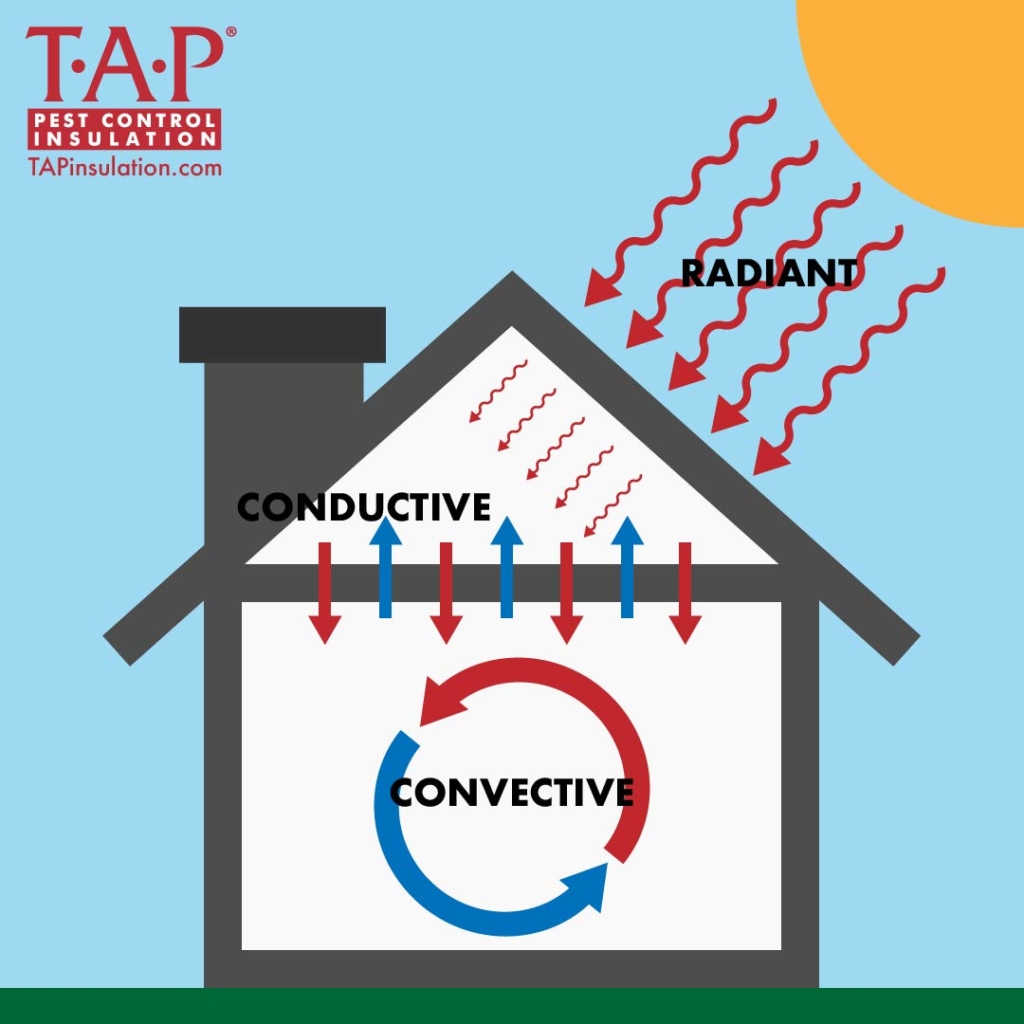
If you have been in a science class at any time, you have probably learned that heat transfers from an object of a greater temperature to an object of lower temperature. This is known as the law of thermodynamics. In your home, however, there are three types of heat transfer taking place at any given point:
- Radiation
- Conduction
- Convection
Let’s take a look at each of these individually and how they impact your home’s thermal envelope and energy efficiency.
1. Radiation
The transfer of heat through empty space without an intervening medium creates the perfect platform for radiant heat transfer. The prime example is the energy that radiates from the sun. As it travels through the vacuum of space energy from the sun travels through the vacuum of space before warming up the Earth and radiating down on the roof of a home. During the summer, radiant heat can cause attic temperatures to skyrocket. If the attic is under insulated, this heat can penetrate the living spaces of the home.
2. Conduction
When heat transfers through conduction, it transfers by direct contact with solid materials. Essentially tiny particles of matter which are in direct contact with each other allow the warmer temperature to transfer to the colder temperature of the materials. For example, the warm air in a home’s living room can pass through the colder areas of the living room’s ceiling flowing into the area above such as an attic or a bedroom. When the area above the ceiling is properly insulated, the transfer of heat is slowed maintaining more of the warmer air in the living room keeping the room’s occupants cozy and warm during a frosty winter.
3. Convection
The transfer of heat while in motion is called convection. The faster the motion of the particles of heat, the faster the quicker the transfer of heat occurs. In the winter months, the heat from a home’s HVAC system enters a room and proceeds to rise to the cooler temperatures near the room’s ceiling. This explains why heat rises and why the room’s floor may be cool to the touch.
A well-insulation home helps homeowners save on annual energy costs keeping the home and its occupants cooler in the summer and warmer in the winter. Choosing the right insulation is key as insulation materials work differently and slow the transfer of heat at varying speeds. In addition to a high R-value or resistance-to-heat value, TAP® Pest Control Insulation offers permanent pest protection against common household pests such as:
- Ants
- Booklice
- Centipedes
- Cockroaches
- Crickets
- Darkling Beetles
- Earwigs
- Millipedes
- Silverfish
- Sow Bugs
- Termites (including Formosan termites)
When opting to add insulation to your home or replace your home’s existing insulation to increase the home’s energy efficiency with a more robust thermal envelope, let the law of thermal dynamics be your guide before it gets too hot in here!
Learn more about EPA-registered TAP® Pest Control Insulation.
Contact us for additional details or to locate a TAP® Provider in your area.

